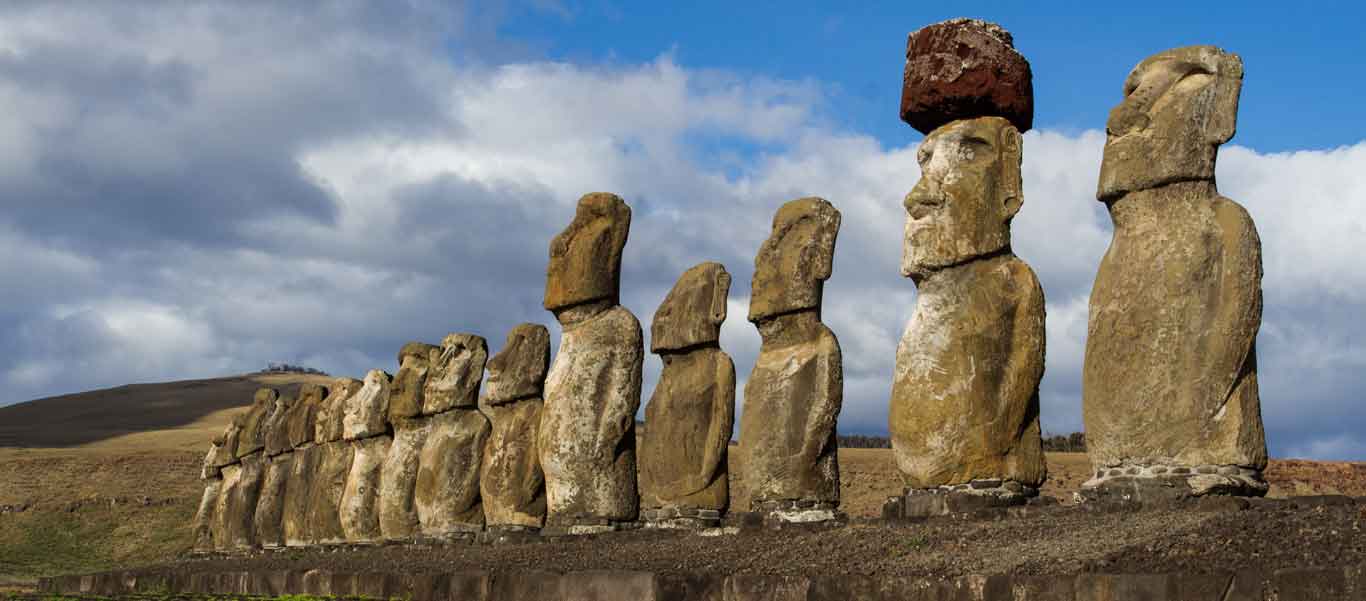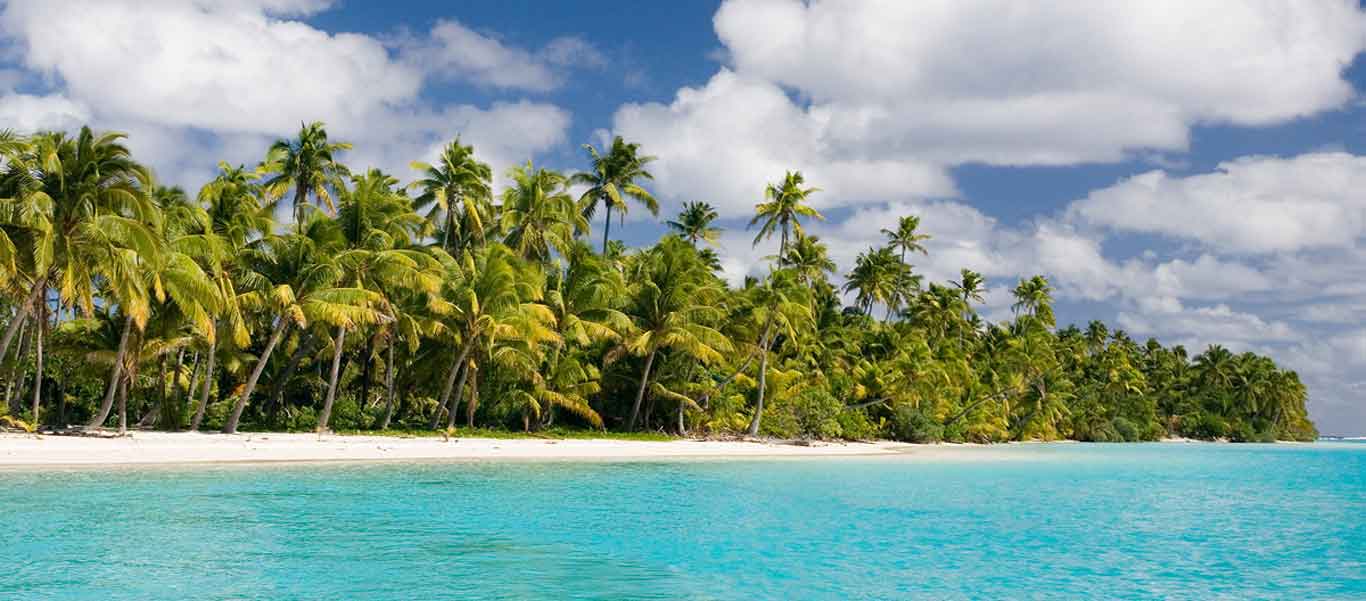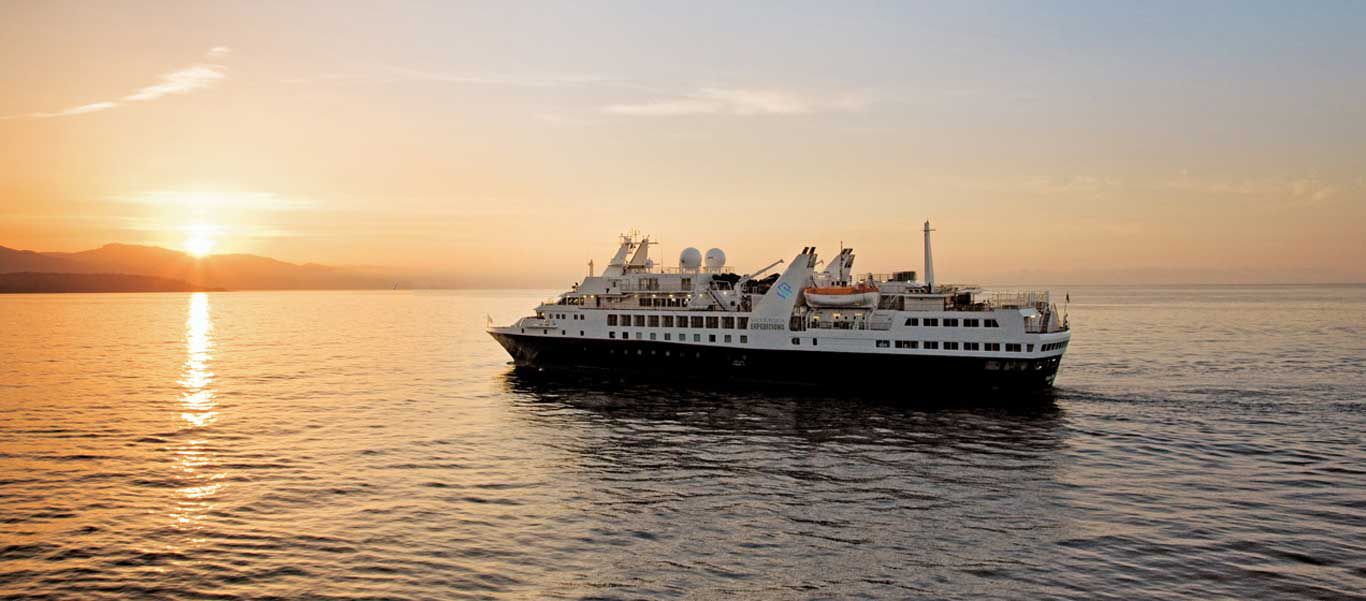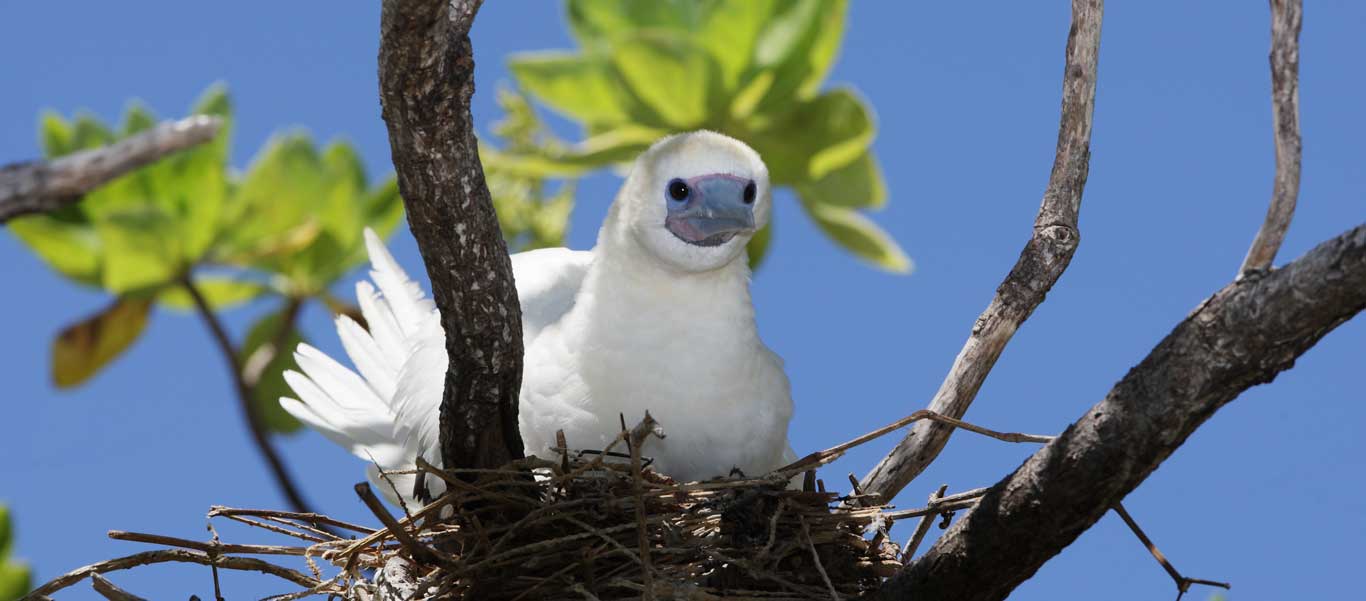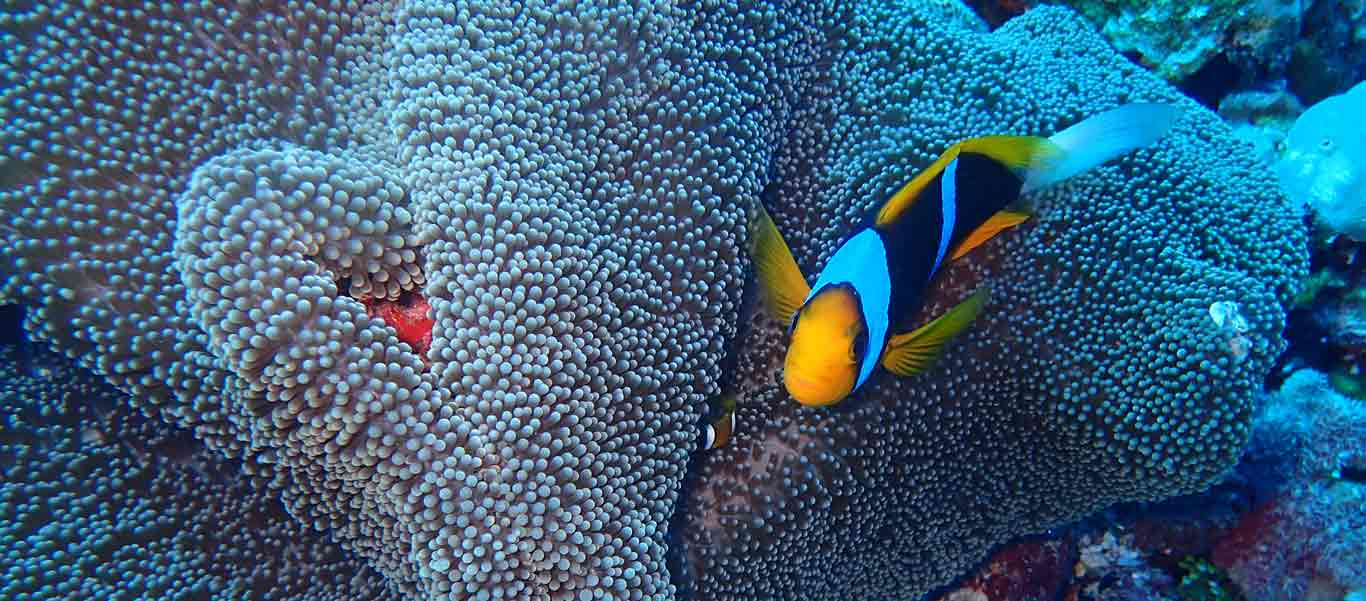Pape'ete to Valparaíso
onboard Silver Explorer
South Pacific Cruise to Austral, Pitcairn and Easter Islands
Travelers, birders, snorkelers, and history buffs alike will delight in this unique and extensive 25-day South Pacific cruise that will sail from Tahiti to mainland Chile. Experience the rarely-visited Austral Islands, all four of the Pitcairn Islands, and Easter Island, then sail on to Alexander Selkirk and Robinson Crusoe Islands before making landfall at Valparaíso, Chile. Along the way, stop at Marotiri, one of the least-visited islands on the planet. This expedition follows the route of the early Polynesian explorers, as well as famed British seamen like Captain Bligh and the HMS Bounty mutineers and Alexander Selkirk, the real-life Robinson Crusoe. Snorkel in turquoise lagoons surrounded by myriad colorful and vibrant reef fish. For birdwatchers, this will be one of the most important voyages of a lifetime with sightings of some of the rarest and least-known seabirds on the planet. Join us on the elegant Silver Explorer, one of the finest and best-run expedition ships afloat, and set out on this Tahiti to Chile journey, a South Pacific cruise without equal.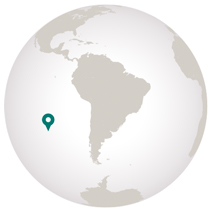
Destinations
- Travel by Air
- Travel by Road
- Travel by Boat
- Travel by Bullet Train
- Travel by Rail
- Travel by Dog Sled
- Day 1
- Day 2
- Day 3
- Day 4
- Day 5
- Day 6
- Day 7
- Day 8
- Day 9
- Day 10
- Day 11
- Day 12
- Day 13
- Days 14 & 15
- Days 16 & 17
- Days 18 – 21
- Day 22
- Day 23
- Day 24
- Day 25
-
Thursday, October 20: Arrive Pape’ete, Tahiti, French Polynesia
Arrive in Pape’ete late this evening and transfer to your hotel nestled among lush tropical gardens and fringed by turquoise waters.
-
Friday, October 21: Pape'ete / Embark Silver Explorer
Enjoy breakfast at the hotel before heading out with your Apex expedition team to explore the island’s lush vegetation, endemic bird species or fascinating history. Embark the Silver Explorer for lunch and settle in to your home away from home for the next 24 days. Be on deck for a bon voyage toast as the ship casts off and you head south to the Austral Islands. Keep cameras and binoculars at the ready as Pape’ete’s inshore and offshore waters usually offer large schools of tuna with pods of Spinner and Bottle-nosed Dolphins. Flying over these fish and mammals will be our first seabirds of the voyage: Tahiti Petrels, Tropical Shearwaters, various species of boobies and dashing White-tailed Tropicbirds.
-
Saturday, October 22: At Sea
At sea, heading south to the Austral Islands, join your team of expert onboard lecturers for introductory tales on the history and wildlife of this fascinating area. As this voyage traces part of the route of the HMS Bounty, the history of the famous breadfruit-seeking expedition of Captain William Bligh and Fletcher Christian will be highlighted. In between lectures be sure to join our naturalists on deck, as these waters are known for their robust whale populations, which include Humpback, Sperm and Brydes Whales. For seabird enthusiasts, Murphy’s, Phoenix, Kermadec and Herald Petrels will ensure plenty of on-deck excitement.
-
Sunday, October 23: Raivavae, Austral Islands
Raivavae, your first stop in the Austral Islands, has been described as a small version of Bora Bora, sans the tourists. Land on its north shore and explore the island by local bus. See the aquamarine lagoon and 1,400-foot Mt. Hiro, the volcanic peak at Raivavae’s center. A stop will be made at a private garden, where one of the few tiki carved on the island can still be seen. Once past the airport—built in the lagoon because there was not enough flat space on land—meet up with the ship’s Zodiacs for a transfer across the sweeping lagoon to the motu, or islet, of Vaiamanu. This is a true South Sea paradise with crystal-clear waters, pristine white sand beaches, pandanus and Coconut Palms. Snorkelers can enjoy a colorful variety of reef fish, and birders are sure to find Reef Herons, tropicbirds and noddies. Head back to the ship midday and continue to sail southwards.
-
Monday, October 24: Rapa Iti
Rapa Iti is the southernmost inhabited island of French Polynesia and is one of the most hauntingly beautiful islands in all of the Pacific, with wide, sweeping vistas of forested peak after forested peak. Take Zodiacs ashore to climb to one of the 28 ridge-top fortresses around the main village of Ahurei, the best of which is the fortress of Morunga Uta, which dates back to the 16th century. Described by the noted sociologist Christophe Serra-Mallol as the “happiest people on Earth”, the islanders are also famous throughout Polynesia for their singing. Join your fellow travelers and islanders at the local church for a sing-along folkloric presentation. For the birders onboard, Rapa Iti is home to two endemic seabirds, the Rapa Storm Petrel and the Rapa Shearwater. Both are enigmatic species we know almost nothing about, seldom photographed and among the rarest of all birds. The endemic Rapa Fruit Dove is also found here.
-
Tuesday, October 25: Marotiri
About 45 miles southeast of Rapa Iti, four volcanic rocks thrust skywards like twisted, arthritic fingers rising above the seemingly endless ocean. This is Marotiri, the most remote and ethereal of islands in all of Polynesia. According to local legend, the twisted spires were used from time to time to exile unwanted Rapans as punishment for crimes and wrongdoings. Be on deck to experience the full drama of these almost never visited rocks, which for seabirders have earned almost mythical status due to the many thousands of nesting Murphy’s, Kermadec, and Polynesian Storm Petrels. Other seabirds include Rapa Shearwaters and Rapa Storm Petrels, Blue Noddies, and Sooty Terns. Pending sea conditions, we hope to launch Zodiacs for a cruise.
-
Wednesday, October 26: At Sea
Spend time on deck looking for some of the rarest, least known and least studied seabirds in the world, which include Phoenix, Herald, Murphy’s and Kermadec Petrels. Tropicbirds and frigatebirds, plus White-bellied Storm Petrels are also possible, and even such species as Royal, Salvin’s and Buller’s Albatrosses which are in transit between their New Zealand breeding grounds and their South American wintering area. White-headed and Soft-plumaged Petrels have also been seen on this leg of the voyage.
-
Thursday, October 27: Mangareva, Gambier Islands
Be on deck this morning as you approach the Gambier Islands, French Polynesia’s easternmost archipelago, and thread through the reef into Mangareva’s dramatic inner lagoon. Largest of a series of submarine volcanic peaks, Mangareva’s rugged backbone rises to 1,450 feet atop Mt. Duff. Step ashore at the village of Rikitea, home to most of the archipelago’s 1,200 inhabitants, to a welcome ceremony of floral leis and traditional dance, before exploring the quaint settlement on foot. The cradle of Roman Catholicism in French Polynesia, Rikitea’s streets are lined with 19th-century buildings made of coral blocks, and its cathedral boasts a fine altar adorned in mother-of-pearl. Ascend the flank of Mt. Duff for views of the lagoon below, or join a snorkeling expedition for a closer inspection.
-
Friday, October 28: At Sea
Heading in a southeasterly direction, learn about the Pitcairn Islands, the last British Overseas Territory in the Pacific. Attend lectures to learn about the island’s endemic plants and animals, and the 50 or so inhabitants, almost all of whom are descendants of the HMS Bounty mutineers and the Tahitians who accompanied them.
-
Saturday, October 29: Oeno Island, Pitcairn Islands, UK
Begin your four-day visit to the Pitcairn Islands at Oeno Island, one of the two “atolls” of the group and the least visited of the four Pitcairn Islands. Known as “Holiday Island” by the Pitcairners, this palm-covered gem rises only eight feet above the turquoise ocean and is home to tens of thousands of nesting seabirds. It is a globally important seabird island. Cleared of rats about 20 years ago, Oeno is now home to the second largest Murphy’s Petrel colony in the world, some 12,500 pairs, plus breeding Phoenix, Herald and Kermadec Petrels. Every bush seemingly has a nest under it. Other breeding species include Greater Frigatebirds, Red-tailed Tropicbirds, Brown and Grey Noddies and Sooty Terns. From afar the birds appear like a cloud of circling mosquitos over white sand beaches and palm-fringed lagoons. This is a South Seas paradise like no other. Weather and waves permitting we hope to make a Zodiac landing to the Pitcairners’ Holiday Island.
-
Sunday, October 30: Adamstown, Pitcairn Island
Located halfway between Peru and New Zealand, Pitcairn was the perfect spot for the famed HMS Bounty mutineers and their Tahitian wives to hide in 1790. Today, go ashore—either by Zodiac, or, if conditions are too rough, by traditional Pitcairn longboat—and visit with some of the island’s permanent inhabitants to get a sense of their daily lives. Listen to the distinct Pitkern dialect, a combination of 18th-century English and Tahitian, and explore the island—visit the museum, cemetery and school, and hike towards Fletcher Christian’s cave. Birders should be on the lookout for the endemic Pitcairn Reed Warbler.
-
Monday, October 31: Henderson Island
Henderson Island is a “makatea”, a raised coral atoll, roughly seven miles long, three miles wide, and seventy to eighty feet high. It is one of the very few makatea whose ecosystem has remained relatively pristine and little affected by human activity. Due to its ecological importance—it has ten endemic flowering plants, plus four endemic land birds, one endemic seabird and about a third of all its insects and gastropods are endemic (a rather remarkable diversity, given its size and remoteness)—it was designated a World Heritage Site in 1988. Conditions permitting, we hope to offer guided walks to view the islands endemic birds: the flightless Henderson Rail, Stephen’s Lorikeet, the Henderson Fruit Dove and Henderson Reed Warbler. Seabirders will venture to the interior to look for the endemic Henderson Petrel. The shallow reef system will also provide the refreshing option of snorkeling with myriad rainbow-colored fish both large and small.
-
Tuesday, November 1: Ducie Island
The fourth, and final, day in the Pitcairns is at perhaps the most important seabird island in the South Pacific, Ducie Island, home to over half a million breeding seabirds. For birders and those that love wild and remote places, this will be a day of incredible memories, skies filled with countless birds, the screams of raucous tropicbirds and the brilliant blueness of the island’s inner lagoon. Comprised of three main islets, the atoll is home to 100,000 pairs of Murphy’s Petrels, the largest in the world, plus breeding Phoenix, Kermadec and Herald Petrels. A supporting cast of White (or Fairy) Terns, Grey Noddies, frigatebirds, tropicbirds, and Masked Boobies will ensure that our visit is not easily forgotten. Beachcombing and snorkeling are also recommended with the opportunity to snorkel over the wreck of the wooden mail ship Arcadia in the lagoon amongst schools of inquisitive Galápagos and White-tipped Reef Sharks.
-
Wednesday & Thursday, November 2 & 3: At Sea
After four days of active Pitcairn landings, put your feet up, relax, and enjoy the Pacific Ocean. The onboard lecture series continues in preparation for your upcoming visit to Rapa Nui, or Easter Island. Often claimed to be the remotest inhabited island in the world, the lectures series will introduce the world of the Long-ears and the Short-ears, the ongoing debate of how the colossal stone heads were transported across the island, and highlight the major archeological sites that we plan to visit. Between lectures, be on deck to scan for whales and seabirds which may include Sperm and Humpback Whales, Wedge-tailed and Christmas Shearwaters and our first Juan Fernandez Petrels of the voyage.
-
Friday & Saturday, November 4 & 5: Easter Island, Chile
Catch the first glimpse of Easter Island as it appears on the horizon. During your time here, visit the Rano Raraku quarry, where the massive moai—the iconic giant-headed monolithic figures—were carved. At Ahu Tongariki, see fifteen moai that were re-erected in the early 1990s. Explore the ceremonial village of Orongo, the sacred site of the ancient ‘birdman’ festivities, and the restored moai platforms at Tahai. Relax on Anakena, the island’s largest white sand beach, while enjoying a lively folkloric presentation by local musicians and dancers.
-
Sunday – Wednesday, November 6 – 9: At Sea
Now begins the big push towards the east and the mainland of South America. The onboard lecture series continues with recaps on your Easter Island visit, plus preparation for two days in the Juan Fernandez Islands. This is a good time to be on deck as large schools of dolphins and Humpback Whales are often seen. Seabirders will now be looking for Juan Fernández, Masatierra and Stejneger’s Petrels.
-
Thursday, November 10: Isla Alejandro Selkirk
Formerly called “Más Afuera,” or “Farther Away,” this island was renamed Alejandro Selkirk, after the Scotsman who inspired Daniel Defoe to write Robinson Crusoe. It is the largest and most westerly island in the Juan Fernandez Archipelago. Besides its use as a penal colony during the Chilean independence movement, Alejandro Selkirk has long been uninhabited, but for feral goats that have been here for some 400 years. The island holds special significance for birdwatchers as it is the only island where the endemic Masafuera Rayadito occurs, and where the majority of the one million pairs of Juan Fernandez Petrels and 131,000 pairs of Stejneger’s Petrels breed. Advanced birders will also be sifting through the many thousands of seabirds for Masatierra Petrel and White-bellied Storm Petrels. Be sure to be on deck to witness the evening return of the islands breeding seabirds, a once in a lifetime opportunity.
-
Friday, November 11: Isla Robinson Crusoe
Farther east lies the aptly named “Mas a Tierra,” or “Closer to Land,” now known as Robinson Crusoe Island because of Selkirk’s having been marooned here. Anchor in Cumberland Bay, not too far from San Juan Bautista, the only village on the island. Take guided walks to several lookout points, and see the island’s endemic plants, which make up more than half of its foliage, and birds, such as the Juan Fernandez Firecrown and Masatierra Petrel, that have put Juan Fernandez on the list of UNESCO Biosphere Reserves and the tentative UNESCO World Heritage list. Hike through pine, cypress and eucalyptus forests to the cliff from which the German cruiser SMS Dresden was shot during WWI. You may also see Juan Fernandez Fur Seals frolicking in the water below.
-
Saturday, November 12: At Sea
Enjoy one last day at sea to edit and share photos from the trip, attend informal lectures and a final recap before the Captain’s farewell dinner. From deck, scan for a host of new seabirds as we enter the cold, nutrient-rich waters of the Humboldt Current. Many species of albatross, petrels, and shearwaters, not to mention large schools of dolphins and a variety of whales including the largest of all animals, the Blue Whale, are regularly sighted in this area. Seabird species should include Northern and Southern Royal Albatross, Salvin’s, Black-browed and Buller’s Albatross, Pink-footed and Sooty Shearwaters, Slender-billed Prion, Masatierra Petrel, Juan Fernandez Petrel, Stejneger’s Petrel, White-chinned Petrel, Westland Black Petrel, plus inshore species such as Guanay Cormorant, Red-legged Shag and Peruvian Pelican. It all promises to be an exciting day on deck.
-
Sunday, November 13: Valparaíso / Santiago / Depart
Be on deck as the ship approaches Valparaíso, Chile’s “Jewel of the Pacific.” Designated a UNESCO World Heritage Site for its singular architecture and unique funicular system, this colorful city cuts quite a beautiful image against the steep hillsides on which it’s built. After breakfast, disembark the Silver Explorer and set out on your choice of full-day touring options—a birding trip to search for such Chilean endemics as the Dusky Tapaculo, or a Valparaíso city tour and wine-tasting adventure— with lunch, before arriving at the airport in Santiago to check in for evening flights home.

